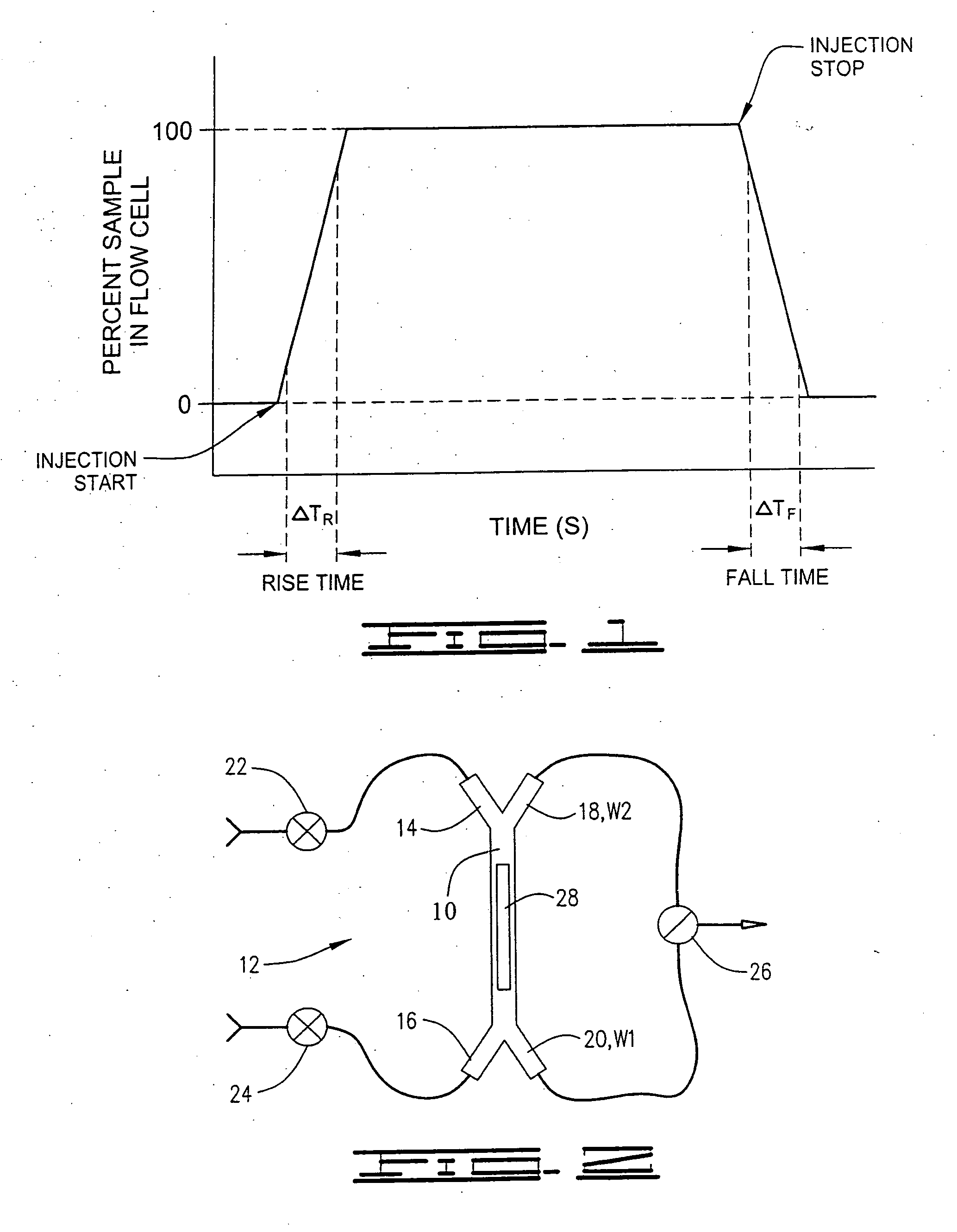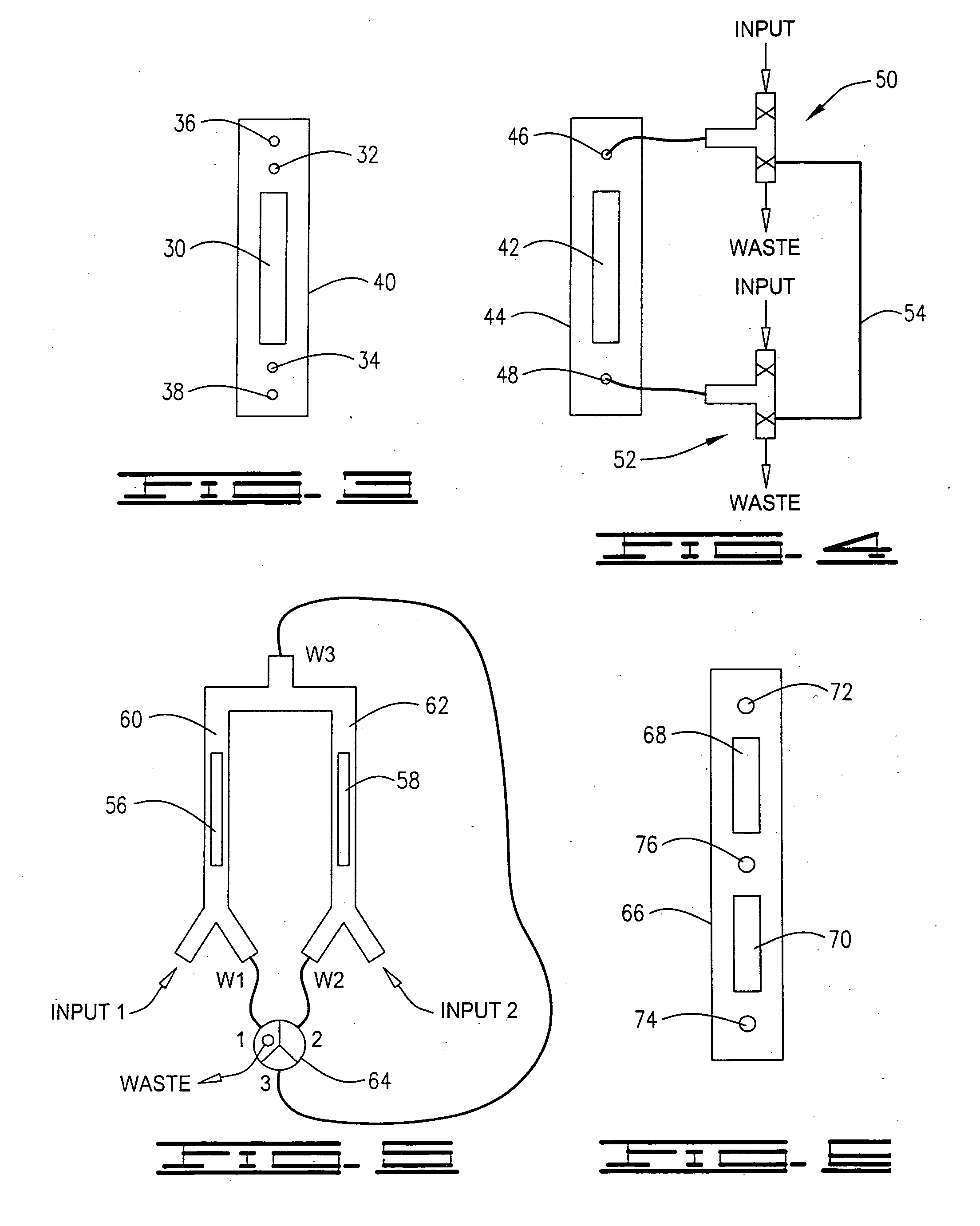Fluidic configuration for flow injection analysis
a flow injection and configuration technology, applied in the field of flow injection configuration, can solve the problems of difficult to achieve without damage, non-integrated systems typically have relatively large dead volumes, and rarely are robust systems, so as to accelerate the rise and fall times, reduce dead volumes, and extend the kinetic range of real-time interaction analysis instruments.
- Summary
- Abstract
- Description
- Claims
- Application Information
AI Technical Summary
Benefits of technology
Problems solved by technology
Method used
Image
Examples
example
[0082]A flow injection system was configured according to the invention as described in FIG. 2. The flow cell volume was approximately 30 nL. Water was flowed from inlet port 14 and exited the channel at waste port 20. Sample (i.e. 10% dimethylsulfoxide in water) was flowed from inlet port 16 and exited at waste port 20. In this configuration water was in contact with the sensing surface 28. The sensor response is plotted as a function of time (data rate of 10 Hz) in FIG. 11. During this period the dispersed (i.e. mixed) segment of the sample is allowed flow to waste port 20. Under our fluidic configuration at least 5 μL of sample was dispensed to waste before the sample was injected. The sensor response (which records the refractive index at the sensing surface 28) remains constant until the sample is injected. The injection over the sensing surface 28 was actuated by simultaneously opening waste port 18 and closing waste port 20. This causes an immediate reversal in the direction ...
PUM
| Property | Measurement | Unit |
|---|---|---|
| diameters | aaaaa | aaaaa |
| heights | aaaaa | aaaaa |
| heights | aaaaa | aaaaa |
Abstract
Description
Claims
Application Information
 Login to View More
Login to View More - R&D
- Intellectual Property
- Life Sciences
- Materials
- Tech Scout
- Unparalleled Data Quality
- Higher Quality Content
- 60% Fewer Hallucinations
Browse by: Latest US Patents, China's latest patents, Technical Efficacy Thesaurus, Application Domain, Technology Topic, Popular Technical Reports.
© 2025 PatSnap. All rights reserved.Legal|Privacy policy|Modern Slavery Act Transparency Statement|Sitemap|About US| Contact US: help@patsnap.com



